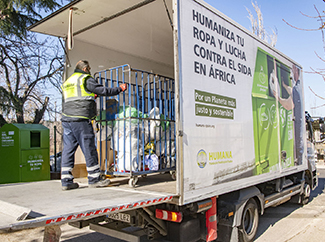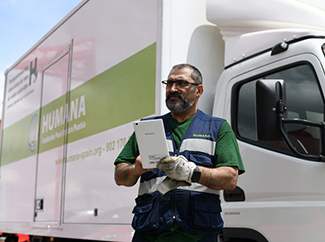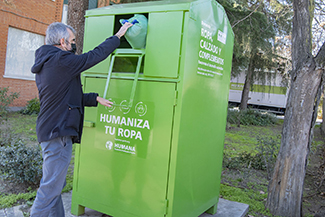consent_cookie
Duración: 1 year
Stores the user's cookie consent state
13-07-2022
Selective collection and management of textile waste have allowed Humana to recover more than 8,600 tons in Spain during the first half of the year, the equivalent of 35 million garments. 90% of all of them will see their life cycle lengthened thanks to reuse and recycling, two key elements for the circular economy and the creation and maintenance of quality jobs (green employment). In addition, this textile waste management has prevented the emission of 52,534 tons of CO2.
The non-profit entity has recovered 8,612 tons from January to June for 8,456 in the same period last year: it is an increase of 1.8%. Textile waste (clothing, footwear, accessories and home textiles) is deposited in the 5,000 containers installed in easily accessible spaces thanks to agreements with local councils, entities and private companies; they are also available in the Foundation's sustainable fashion stores.
The 35 million garments recovered are classified in the two preparation plants for reuse that Humana has in Leganés (Madrid) and l'Ametlla del Vallès (Barcelona). “The first objective is always reuse, because the most sustainable article is the one that has already been manufactured and has no more costs or production impacts; then recycling; finally, when there is no other choice, energy recovery or sending it to the landfill”, says Rafael Mas, Director of Projects and External Relations at Humana.
“We appreciate the donations from citizens”, adds Rafael Mas, “however, there is still a long way to go. And it is that each citizen gets rid of between 20 and 30 kg of textile annually, but in the municipalities with selective collection, the average 5 kg is not reached”.
In other words: in Spain more than one million tons of textile waste is generated annually; Unfortunately, only slightly more than 10% is collected. The rest is thrown away in other fractions and finally ends up in a landfill. These are unaffordable figures that the legislation tries to mitigate.
The recent Law 07/22 on Waste and Contaminated Soils for a Circular Economy prohibits the destruction of surplus; determines that the selective collection of textile waste, which is a local responsibility, will be mandatory in all municipalities before December 31, 2024; strongly supports reuse; promotes the implementation of different figures of Extended Producer Responsibility (RAP), and forces to reduce the amount of municipal waste that reaches the landfill.
Environmental and social benefit
The reuse of textiles contributes to the fight against climate change: for every kg of clothing recovered (and not taken to a waste treatment center for incineration or final disposal) the emission of 6.1 kg of CO2 is avoided, according to a study by the Federation Humana People to People.
To this environmental benefit must be added the social one: firstly, the creation of green employment (Humana generates one job for every 30 tons of textiles collected). In addition, the resources generated by the entity are allocated to international cooperation programs for development, and to local support and urban agriculture in Spain.


